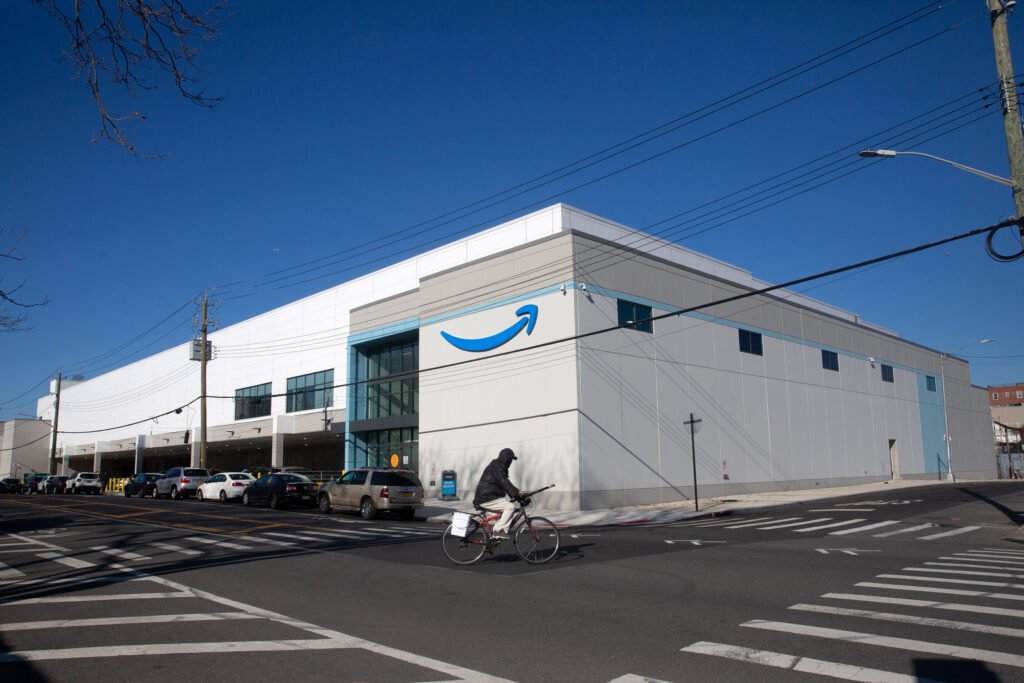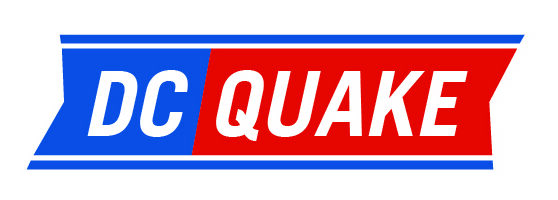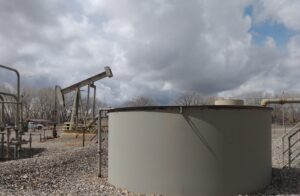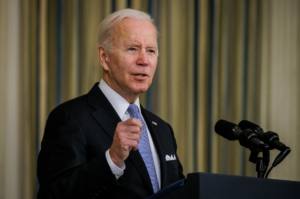Amazon, FedEx and UPS Deliver New NYC Warehouses, Bringing a Package of Environmental Challenges
7 min read
Online retail may make holiday shopping easy, but the local impact is anything but virtual.
To meet a growing demand for speedy shipping, companies are increasingly putting warehouses and so-called last-mile facilities throughout the city — largely unregulated and without the public’s ability to weigh in on threats to health, safety and the climate.
“This is straight-up environmental racism,” said Elizabeth Yeampierre, executive director of UPROSE, a Sunset Park-based environmental justice group. “When everyone is talking about racial justice and equity and green jobs, this is contrary to how everyone is thinking about how we move forward.”
Environmental advocates and community groups are ramping up the push for the city and state to intervene — setting the stage for potential legislative or regulatory action to tackle fulfillment centers, last-mile facilities and the truck traffic that comes with them as a new administration enters City Hall.
Elected officials, including Public Advocate Jumaane Williams, Brooklyn Borough President-elect Antonio Reynoso and Assemblymember Marcela Mitaynes (D-Brooklyn) will gather with environmental justice advocates in Brooklyn on Wednesday to call for the regulation of last-mile facilities to be at the forefront of a new legislative session.
At least five facilities supporting e-commerce are in the works in Brooklyn’s Red Hook and Sunset Park alone, according to tracking by local groups and elected officials.
Amazon will use three of them, while UPS is slated to use one and FedEx another. They join similar major developments around the city, including in East New York, the South Bronx and around Queens.
Environmental justice advocates, local community members and some elected officials argue that the neighborhood zoning rules on the books never anticipated the type of last-mile facilities popping up.
“It’s nobody’s agenda to stop the siting of last-mile delivery facilities, but on the other hand, a Wild West scenario — you can just build them in any manufacturing-zoned land you can — that’s also not where we need to be,” said Eddie Bautista, executive director of the Environmental Justice Alliance. “A city and state that’s increasingly taking its environmental justice and climate justice responsibilities seriously can’t ignore this.”
The city Department of Transportation on Wednesday will release a proposal, reviewed by THE CITY, to improve the freight network — encouraging increased use of waterways for goods transport, more bike deliveries and other measures to balance economic interests with neighborhood concerns.
But the incoming Adams administration will ultimately inherit the challenge.
‘Prime Real Estate’
Online shopping grew by more than a third nationwide in 2020 compared to 2019, thanks to the pandemic accelerating an already upward trend. Activity is up another nearly 7% in the third quarter of 2021 compared to the same period last year. That’s forcing local industrial infrastructure to grow to meet the demand.
The most coveted spaces are those close to waterfronts and with easy highway access, according to Daniel Tropp, founder of industrial real estate brokerage firm AEBOV. Those areas tend to be neighborhoods of lower-income communities of color — the same types of neighborhoods where most of Amazon’s warehouses are located, a recent Consumer Reports investigation found.
“To them, it’s prime real estate, but to us, it was like a forced adoption of these businesses that are going to increase traffic in an area that’s already overflooded with commercial vehicles,” said Melinda Perkins, district manager of Community Board 5 in East New York, which is already home to two Amazon distribution centers and a FedEx facility.
Perkins recently joined forces with members of Community Boards 6 and 7 in Red Hook and Sunset Park to address the proliferation of distribution centers.
E-commerce facilities employ large trucks and smaller sprinter vans — some electric — to cart packages from warehouses to doorsteps. UPS plans its delivery routes with the aim of reducing the number of vehicles on the road and is expanding its e-bike usage, according to spokesperson Matthew O’Connor.
Amazon and FedEx did not respond to requests for comment.
On top of growing congestion, safety hazards for cyclists and pedestrians, and potential damage to streets and buildings as the trucks rumble down largely residential corridors, increased vehicular traffic threatens neighborhoods already shouldering disproportionate pollution burdens.
The transportation sector is the second-largest source of planet-warming greenhouse gas emissions in the city, after buildings, and pollution from diesel-fueled trucks is also harmful to health.
“It’s like having a bunch of little mini-power plants roaming the streets,” said Kevin Shen, Northeast Transportation Policy Analyst, Union of Concerned Scientists.
New York City has some of the highest levels of diesel pollution in the state, with Black, Hispanic and Asian New Yorkers exposed to harmful particulate matter at disproportionate rates. Higher exposure to particulate matter is linked to health conditions like COPD and asthmas, as well as higher COVID-19 death rates
Sunset Park and Red Hook already have higher-than-average levels of fine particulate matter, according to the city Department of Health, comparable to heavily trafficked areas like Hunts Point and Mott Haven in The Bronx.
‘Failure of Leadership’
Karen Blondel, a longtime resident of Red Hook Houses and a 2022 Loeb Fellow at Harvard University School of Design, said the rules that allow e-commerce facilities to proliferate are “antiquated” and “counterproductive” to local resiliency efforts.
These include the city’s Red Hook Coastal Resiliency Project and UPROSE’s Sunset Park Green Resilient Industrial District vision.
“E-commerce is here to stay, but we still have to regulate it in urban supercities like New York, where it has to blend in with the people who are also living there,” Blondel said.
City agencies are aware of the growth of distribution facilities, but there’s no comprehensive plan to guide their development or operations.
“This is not a stagnant situation. There’s every reason to believe it’s going to keep getting worse,” said DOT Commissioner Hank Gutman, who called the proliferation of e-commerce “one of the most important transportation issues that we confront as a city that we confront as a nation in the 21st century.”
The DOT and the city Economic Development Corporation have said they’re committed to changing the last leg of the supply chain.
As laid out in the DOT’s forthcoming freight plan, the agency wants to encourage use of cargo bikes and off-peak deliveries, and plans to expand a Hunts Point-based program that offers rebates as an incentive to replace diesel trucks.
The DOT is also looking to use waterways and railways to transport goods, with renovations proposed for the South Brooklyn Marine Terminal and Red Hook Piers, as well as the Arthur Kill Lift Bridge and Cross Harbor Rail. The city will seek federal dollars to fund changes.
But for some, the de Blasio administration’s efforts have come too late, and they’re pinning their hopes for change on the incoming Adams administration.
“There’s been a failure of leadership to take action on these issues,” said Katie Walsh, a Sunset Park resident and chair of a Community Board 7 subcommittee on last-mile trucking facilities. “This needs to be an Eric Adams mayoral issue.”
‘We Have to Create Rules’
A spokesperson for Adams did not respond to a request for comment. But the size of the challenge requires the political will to come up with a multi-pronged strategy, said Tiffany-Ann Taylor, vice president for transportation at the Regional Plan Association and a former deputy director of freight programs at the city DOT.
“The conversation here is about economic development, about union workforces, about transportation safety, about very large companies with very deep pockets whose business is critical to the functionality of your city,” Taylor said.
She warned that the city should not wait until there’s a “breaking point” to move, given forecasted e-commerce growth — and the action should focus further up the supply chain, before locals even notice truck traffic in their neighborhoods.
“Usually we find out about these things after the fact,” said Danny Peralta, executive managing director of The Point, a Bronx community nonprofit. “We have to fight preemptively. We have to create rules.”
The Department of City Planning, under outgoing Mayor Bill de Blasio, has no plans to alter the zoning for manufacturing areas, according to spokesperson Joe Marvilli. He warned of adverse economic impacts should businesses become ensnared in prolonged public review processes.
But the city could adopt a zoning text amendment for permitting processes for last-mile facilities, recognizing them as distinct from other warehouses, say community board leaders and environmental groups examining the issue.
Seeking ‘Real Solutions’
That would be similar to the amendment adopted by the City Council in 2018 that requires special permits for new hotels in light manufacturing zones, or the amendment adopted in 2017 for self-storage facilities.
The West Coast could provide some inspiration for action at the state level in New York, as well: the South Coast Air Quality Management District — an agency that oversees the greater Los Angeles area — this year passed rules that consider warehouses as “indirect” sources of greenhouse gas emissions and require facility operators to decrease their truck emissions.
“We have to regulate this industry and really kind of get some real solutions around how to move products around our city and how to do that equitably, in a way that protects health and safety,” said Brooklyn Councilmember-elect Alexa Aviles. “Allowing a proliferation of fossil fuel trucks everywhere is completely at odds with the ambition around net zero.”
The holiday season makes sense for serious consideration of the future of e-commerce facilities, said Bautista: “We should not only think about loved ones we’re making purchases for but frankly the host communities.”
This article was originally posted on Amazon, FedEx and UPS Deliver New NYC Warehouses, Bringing a Package of Environmental Challenges






